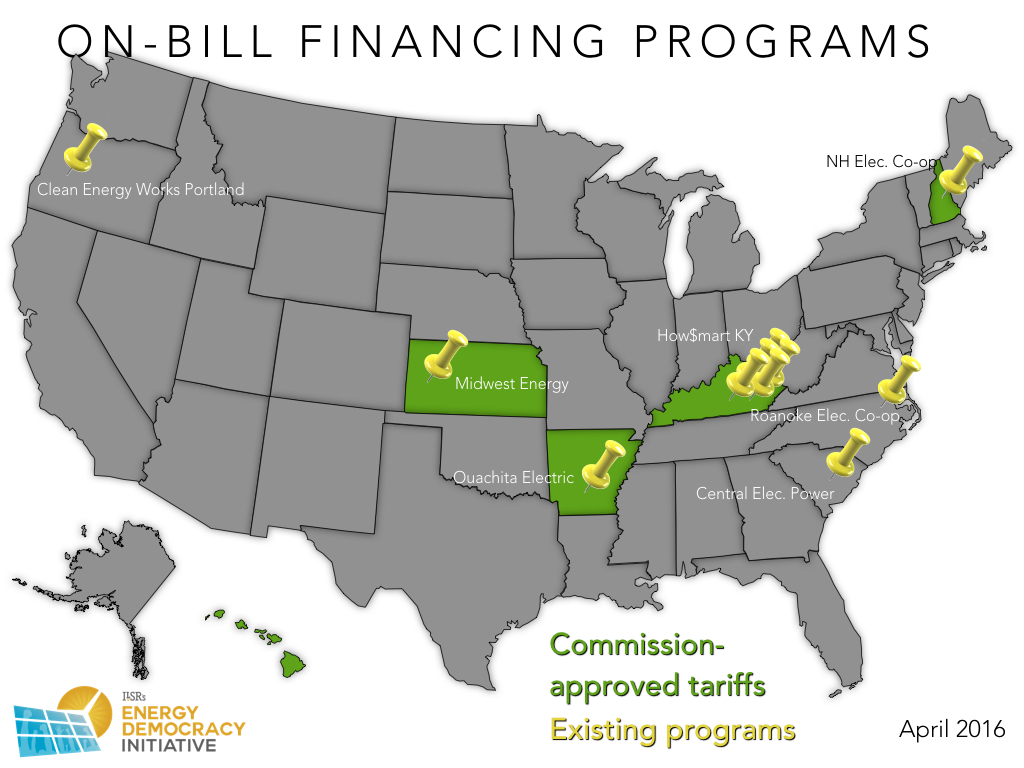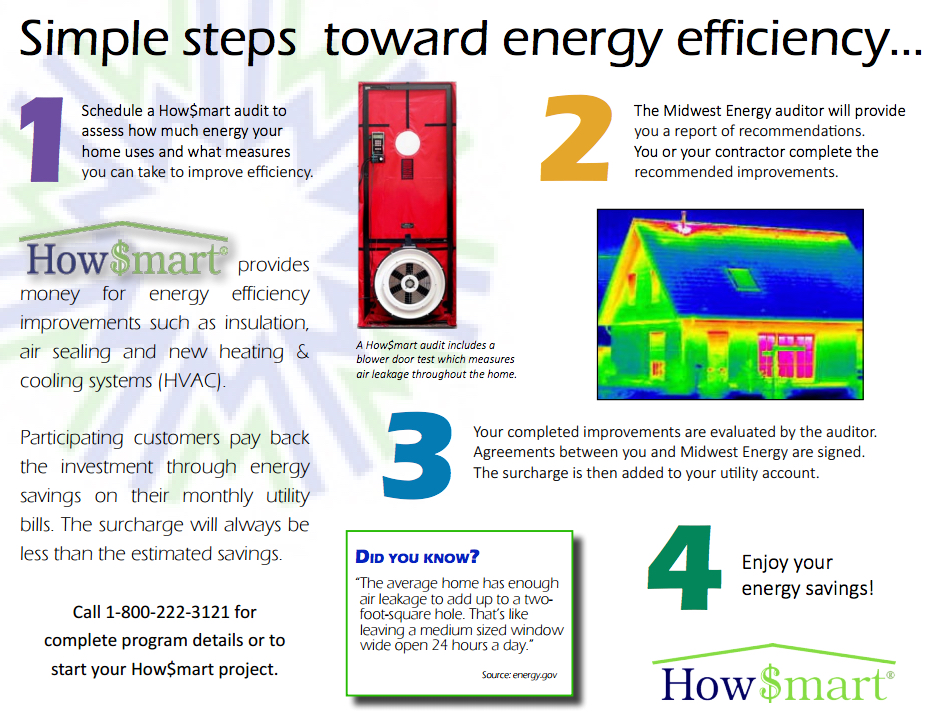A Kansas Electric Cooperative Offers Energy Savings With $0 Down — Episode 32 of Local Energy Rules Podcast
Originally published at ilsr.org.
It’s not sexy. But it can make you warmer. It can even make you cooler.
On-bill financing provides loans for energy efficiency improvements through the local utility company, paid back with energy savings on monthly electric (or gas) bills. And it’s a powerful tool for simplifying the financing for energy savings, and for making home comfort and lower bills available to those without the credit to borrow money on their own.
On-bill financing is not new. The Tennessee Valley Authority has offered it for years. More recently, numerous municipal utilities and electric cooperatives have created programs. But Midwest Energy, on the prairies of western Kansas, might have the best track record.
Brian Dreiling, manager of energy services at Midwest Energy, shared his utility’s story with Local Energy Rules this week, explaining the on-bill program, what makes it successful, and how an investment in the member-owner’s home is an investment in the utility.
Podcast (Episode 32 of Local Energy Rules): Play in new window | Download
Subscribe: iTunes | Android | RSS

Since 2007, electric and gas cooperative Midwest Energy has helped more than 200 members per year retrofit their home with insulation, heat pumps, and more. Even while paying back cost of improvements, members save an average of $10 per month. To date, Midwest Energy’s How$mart Program has saved the equivalent electricity of 319 homes per year, and the equivalent gas use from 550 homes.
Easier, Better, Faster
Midwest Energy offered rebates for energy efficient upgrades for years, but found the traditional program’s response was lacking. In 2007, after consulting with the Energy Efficiency Institute, they piloted the How$mart program to four counties in their territory. In 2008, they rolled it out for all 48,000 electric members, and all 42,000 gas members.
“Without the financing side, things just don’t happen,” says Dreiling. On-bill financing removes up-front cost as a barrier to home energy improvements. Starting with a home energy assessment (visualized below), the member-owner is provided with options for energy-savings improvements, and how much of the improvements Midwest Energy will help to finance.

There are a few rules to the program. Unlike most loan programs, you don’t need a credit check — just a history of paying your bills on time. Predicted savings must be 10% more than the loan repayments. The loan repayment stays tied to the electric meter, not the person.
A key element to guaranteed savings is that the cooperative only finances the portion of projects, such as new windows, that produces energy savings. The cooperative might finance 50% of a new furnace, for example, with the property owner responsible for the remainder.
Dreiling says that flexibility gives the customer a better idea of what projects might pay off, almost certainly giving them a lower energy bill, and helps the utility ensure that it will see energy savings from its investments.
The cooperative also tries to be conservative with its savings estimates, using data from actual installations to give its members the most accurate projections. Some improvements may not pay for themselves, “and we’re upfront about that. I think [members] have a little more trust in us because of that,” says Dreiling.
“Investment in our System”
The end result, helping more than 200 members per year retrofit their homes and businesses, means people and the utility save on the electric bill, and local contractors get more business. In total, counting participants who invest their own money on improvements, more than $11.6 million has been spent, involving 240 contractors.
“We, as a utility, view this as an investment in our system,” says Dreiling. The customer, no longer just an energy consumer, can help the cooperatives by helping themselves to save energy.
Access for All
Tenant properties and low-income members are key parts of this program, comprising about 20% of participants. For renters, the program is simplified even further: the landlord assumes any upfront costs, while the cooperative finances energy savings–ready improvements, and the tenants merely reap the benefits on their individual bills. For low-income members, Midwest Energy works with the federal weatherization assistance program to cover the audit and some of the costs for the upgrades in addition to eschewing use of credit scores that often limit low-income access to financing.
Midwest Energy has always been a different sort of animal. It has bought out other area investor-owned utilities, and is always seeking to expand. It offers gas service, unusual for an electric cooperative. It was also the first utility in Kansas to offer community solar, allowing members to buy shares of the production from a utility-owned solar array.
An on-bill financing program is a good example of how electric cooperatives can remain in service to members even as it adjusts to an electricity system where reducing use, rather than growing, is the new paradigm.
For more information on the challenges of maintaining member control (and other issues), see ILSR’s report Re-Membering the Electric Cooperative, released in March 2016.
This is the 32nd edition of Local Energy Rules, an ILSR podcast with Director of Democratic Energy John Farrell that shares powerful stories of successful local renewable energy and exposes the policy and practical barriers to its expansion. Other than his immediate family, the audience is primarily researchers, grassroots organizers, and grasstops policy wonks who want vivid examples of how local renewable energy can power local economies.
It is published intermittently on ilsr.org, but you can Click to subscribe to the podcast: iTunes or RSS/XML
For timely updates, follow John Farrell on Twitter or get the Energy Democracy weekly update.
Have a tip for CleanTechnica? Want to advertise? Want to suggest a guest for our CleanTech Talk podcast? Contact us here.
Latest CleanTechnica.TV Video

CleanTechnica uses affiliate links. See our policy here.

